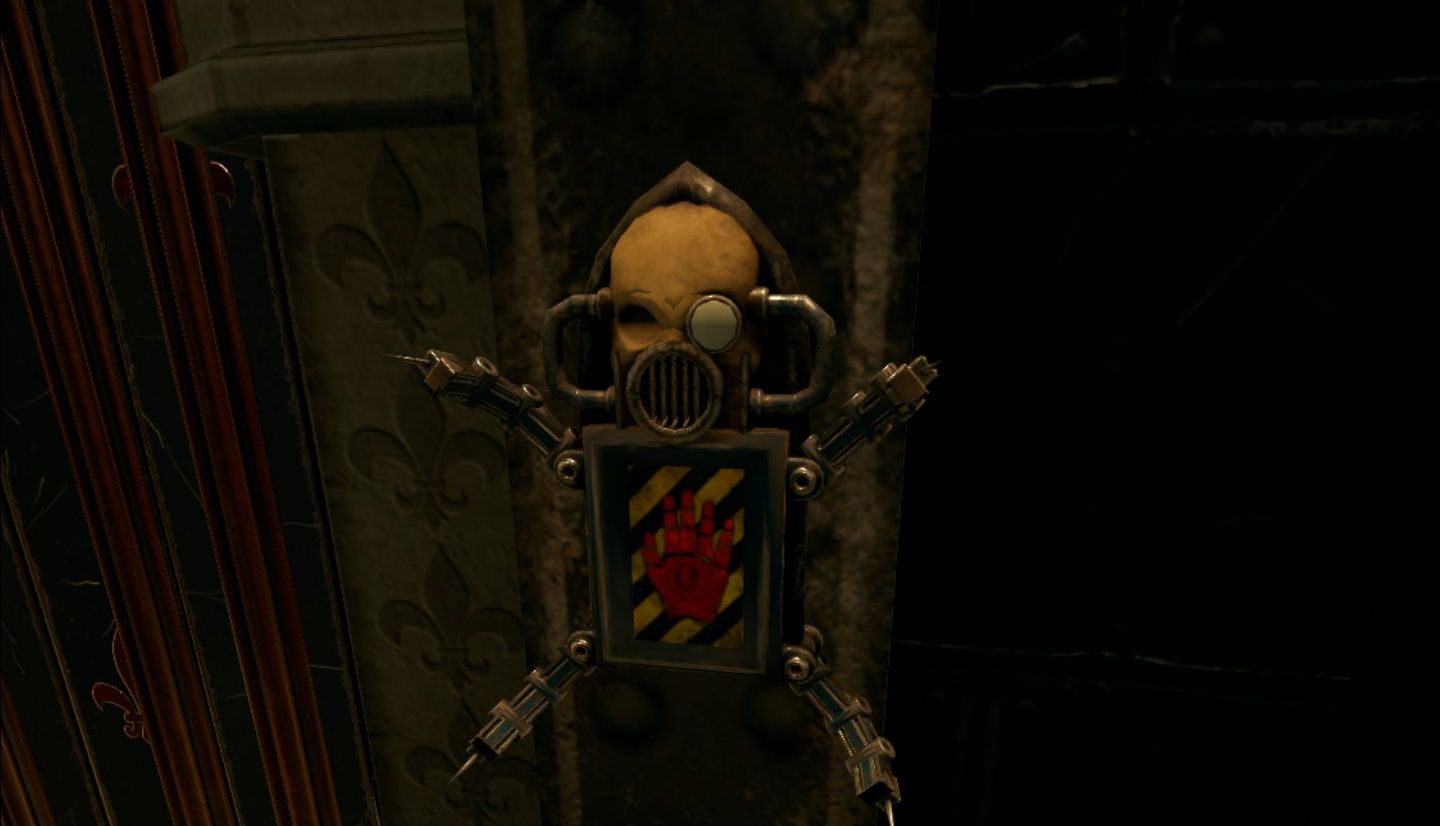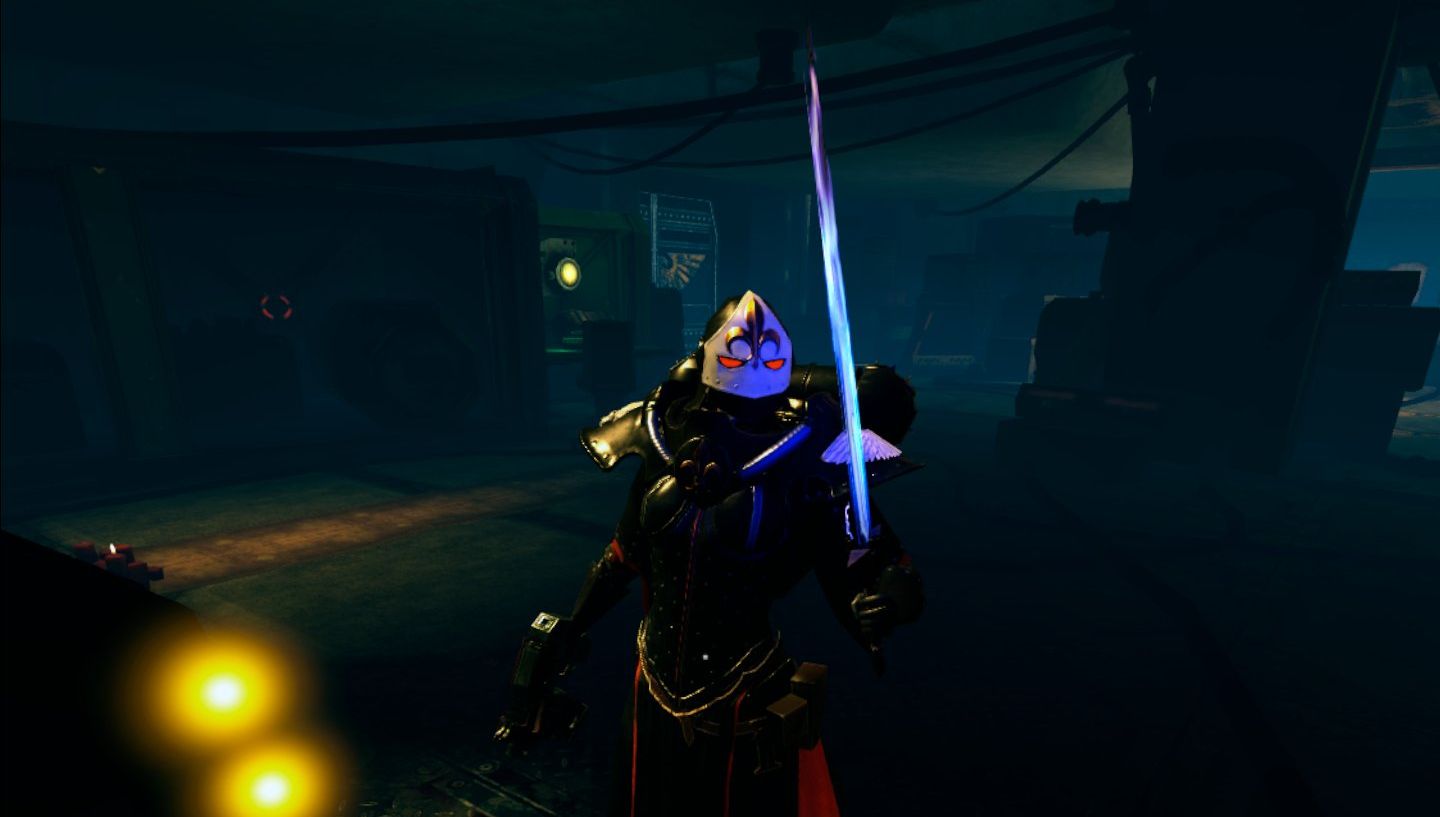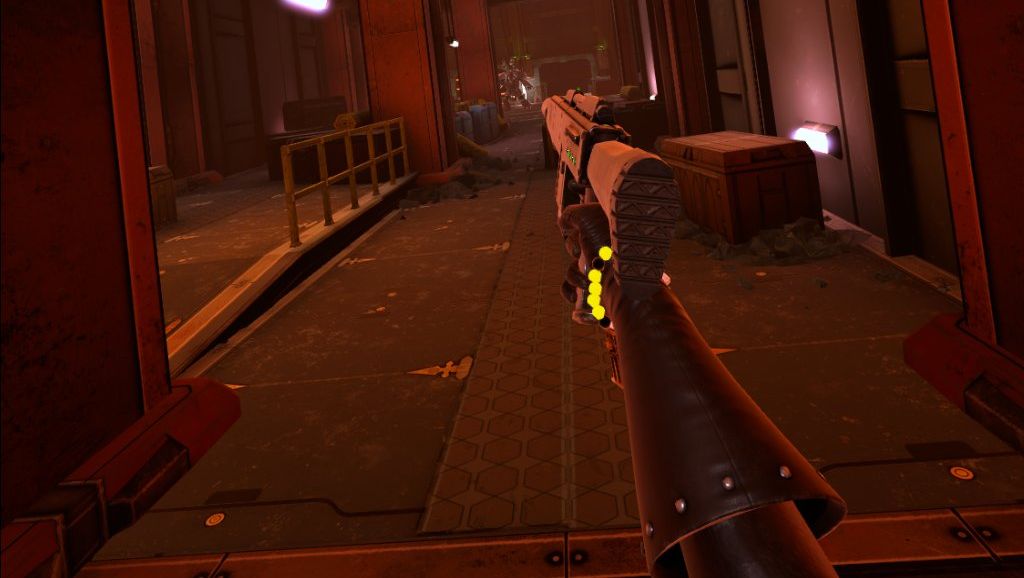Battle Sister is the first Warhammer 40,000 game built for VR
Our first opportunity to get up close and personal with bolters and chainswords.

"Did they get the bolters right?" That's the first question we ask about any Warhammer 40,000 game. They're one of the setting's iconic weapons, described in loving detail in every one of the many 40K novels. Battle Sister is the first 40K game developed from the ground up for virtual reality (Betrayal at Calth has VR support but that was an added feature, and it's a turn-based hexgrid strategy game), so this is our first opportunity to hold a bolter in our gauntleted virtual hands.
In Battle Sister, the bolters look right. They're chunky boys, originally designed to be easily readable when molded onto a figurine made of 1980s lead. They sound right too, coughing out a throaty hack. But having to land multiple body shots to drop a weeny cultist with one just feels wrong.
Sure, you can flick that cultist's gas-masked face clean off with a single headshot, but the same is true with Battle Sister's lasrifle. The bolter doesn't feel like much of an upgrade over a standard infantry gun, and it should. Bolters shoot mass-reactive rounds designed to detonate inside their targets. They should make people explode. A bolt isn't a bullet, it's what you get nine months after a bullet fucks a grenade.
Battle Sister does get other stuff right. I'm playing it on an Oculus Quest 2 (the headset it was released for in 2020, with a Rift version following this year), which means I don't have to worry about cables and can walk around really rubbing my face on the 41st millennium. There's plenty of ornate stuff to get close to. It casts you as one of the adepta sororitas, the Sisters of Battle who protect the Imperium from Chaos, and an early level has you walk through a temple-fortress past armored warriors praying and gigantic candles burning. The security handscanner has a skull and needles on it, which is extremely 40K.

So are the times I crane my neck to look up at an imposing space marine, or watch a thunderhawk gunship come in to land. Feeling present in moments like this, scenes right out of the books, is undeniably powerful. Which is why it's crushing that other parts of Battle Sister are a letdown.
Though it borrows a lot of interactions from Half-Life: Alyx—weapons and ammo even fly into your hands like you've got gravity gloves on—the physical nature of VR controls is still an issue. Plucking the pin out of a grenade then throwing it should be cool, but the physics are wonky and sometimes a flick of the wrist will send one right into the sky. And why can I only carry one grenade? I need Alyx's milk crate to lug them around in.
There are holsters on your hips and shoulders for four weapons, but swish as it feels to draw a sword off your back, there are too many times when my hand comes back empty or I try to holster a weapon and it falls to the ground. Once I dropped a sword off a moving platform into a spot that was out of reach. I guess it'll stay there forever.
The biggest gaming news, reviews and hardware deals
Keep up to date with the most important stories and the best deals, as picked by the PC Gamer team.

Faith powers are the fiddliest thing to control. You hold down a button and then make a different motion depending on whether you want to slow time, raise a shield, or push enemies back. It's kind of like spellcasting in Arx Fatalis, but I trigger the wrong ability just often enough to make me long for a simple button to press instead.
The problem isn't just that the controls don't work consistently, but that when they go wrong and I die thanks to a lost weapon or miscast ability, it's infuriating to go back to a checkpoint that's on the wrong side of an elevator ride or a tutorial for a new ability. Especially in later levels those checkpoints are spread way too far apart, because I guess in the grim darkness of the far future the save game budget is limited.

When the controls work the way they're supposed to, Battle Sister is much easier. Marines from the heretical Word Bearers chapter slowly sidestep into view, moving in a pattern that's predictable enough I eventually start taking them on casually, saving bolter ammo by using a lasrifle held in one hand. Occasionally a Word Bearer in terminator armor will teleport in, then shoot continuously at a column between us while I pick him off by aiming around it. Some of the enemies who charge—assault marines with jetpacks or daemons with blades—are more intimidating. Mostly because you never know if drawing a chainsword to deal with them will work.
The chainsword's another iconic 40K weapon, and when I pick my first one up, squeezing the trigger to rev it, that feels pretty rad. But what should be a "hell yeah" moment is undercut because I've already got a power sword at this point, and it blocks bullets as if it's a lightsaber. Just like the bolter, the chainsword ends up being underwhelming.
If a game offers me an assault rifle and I decide I like the shotgun more that's one thing, but these are weapons that define the setting, and they shouldn't inspire a shrug.

Jody's first computer was a Commodore 64, so he remembers having to use a code wheel to play Pool of Radiance. A former music journalist who interviewed everyone from Giorgio Moroder to Trent Reznor, Jody also co-hosted Australia's first radio show about videogames, Zed Games. He's written for Rock Paper Shotgun, The Big Issue, GamesRadar, Zam, Glixel, Five Out of Ten Magazine, and Playboy.com, whose cheques with the bunny logo made for fun conversations at the bank. Jody's first article for PC Gamer was about the audio of Alien Isolation, published in 2015, and since then he's written about why Silent Hill belongs on PC, why Recettear: An Item Shop's Tale is the best fantasy shopkeeper tycoon game, and how weird Lost Ark can get. Jody edited PC Gamer Indie from 2017 to 2018, and he eventually lived up to his promise to play every Warhammer videogame.

